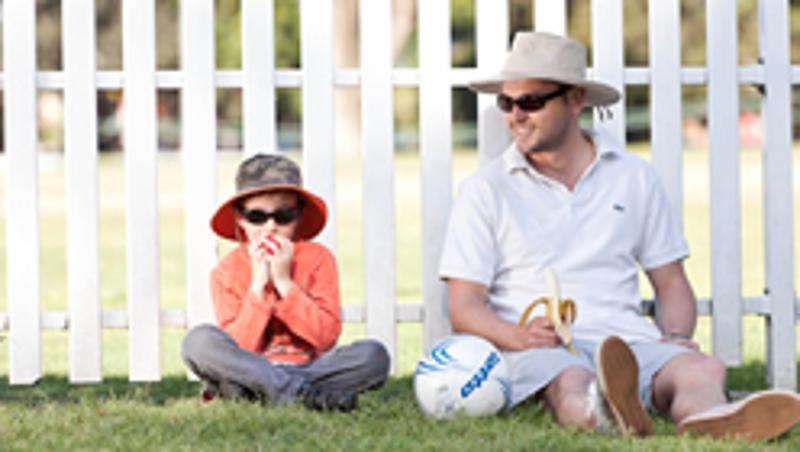
QUT has a multidisciplinary team of experts who can speak about various aspects of the current heatwave.
Contact QUT Media to speak to any of the following:
Associate Professor Adrian Barnett - health statistician
Professor Barnett has mapped the 16 Brisbane suburbs most likely to land someone in hospital during a heatwave, and Archerfield tops the list. He found a 10 degree temperature increase in summer was associated with a 7.2 per cent increase in hospital admissions across Brisbane the following day, but hospitalisation figures for 16 of those suburbs were, on average, around 30 per cent. "Our research shows there are two suburb characteristics that predict a high risk of heat-related hospital admissions - a lack of high-income earners and a higher population density," he said.
Professor Barnett previously conducted leading research:
- into the potential impact climate change will have on 'years of life lost' in Brisbane
- that found a link between increases in temperature and the incidence of stillbirth and shorter pregnancies
- that found temperature-related deaths account for 6,500 years of life lost in Brisbane alone each year.
Associate Professor Ian Stewart – environmental occupational and exercise physiologist
Professor Stewart studies heat strain for at-risk workers in physically demanding jobs. His expertise has informed various temperature-related work regulations. He has previously studied children’s physical activities in the heat. Professor Stewart can speak about the following:
Which workers are most at risk during a heat wave: “Anyone working outside is at risk, but the more active their job is, the more they are at risk of heat exhaustion and heat stroke.”
What causes heat strain: “Everyone generates extra heat internally which, under normal circumstances, dissipates into the cooler air outside the body, so that we maintain a core temperature of between 36O and 37O C. But if the air outside is already 37o, your body can no longer get rid of that excess heat – you’ve lost that natural mechanism for dispersing your internal heat. That’s why heatwaves are a so dangerous.”
Why humidity brings added danger: “It’s double trouble when there is high humidity during a heatwave because your sweat is no longer doing its job. It pours off your skin before it has time to evaporate and cool you down.”
Signs to watch out for, and what to do if someone you know is suffering from heat strain: “In a heat stroke situation, the body’s cardiovascular system actually stops trying to send blood to the skin to disperse heat and starts concentrating solely on maintaining adequate blood pressure. It’s important to lie the person down, put ice packs under their knees and in their armpits and groin (where the main arteries are close to the surface) and give them small amounts of cool fluid (not ice-cold).”
Kelly Stewart, accredited sports dietician
Ms Stewart studies nutritional intake in athletes who are often working under extreme conditions. Ms Stewart can provide practical advice to the general population on:
What to eat in a heatwave: “Cold salads with lots of vegies and a protein-rich ingredient is a great choice in a heatwave. Try eating lots of cold fruits like watermelon or frozen grapes. Sandwiches with toppings that naturally contain a bit of salt will help you hang onto the water you drink.”
What to drink: “Water, water and more water. A little bit of cordial is okay but not too much – we don’t want to end the heatwave 5kg heavier. Active outside workers could benefit from a sports drink during the day to help them retain the fluid they’re consuming but I’d advise a sports drink for children or the elderly only if they are dehydrated.”
What to avoid: “Avoid hot meals altogether in a heatwave. Hot meals heat up your body as well as your house, neither of which you want to happen. Soft drinks or juice are generally unnecessary – a piece of fruit is a far better choice.”
Dr Wendy Miller, energy expert
Dr Miller’s expertise includes energy efficiency and renewably energy, particularly in the built environment. She has conducted leading research into how we can build better houses so the public remains safe during heatwaves. Dr Miller can discuss:
- why houses in Queensland are not designed well enough for heatwaves
- which building practices reduce the impact of heatwaves
- myths of the Queenslander-style house
- the conundrum of whether to leave the shades up or down in heatwaves.
Media contacts
Kate Haggman, QUT Media, 07 3138 0358, kate.haggman@qut.edu.au
After hours Rose Trapnell, QUT Media team leader, 0407 585 901, media@qut.edu.au
QUT is part of a national collaborative group of five major Australian universities that form the ATN (Australian Technology Network of Universities).




